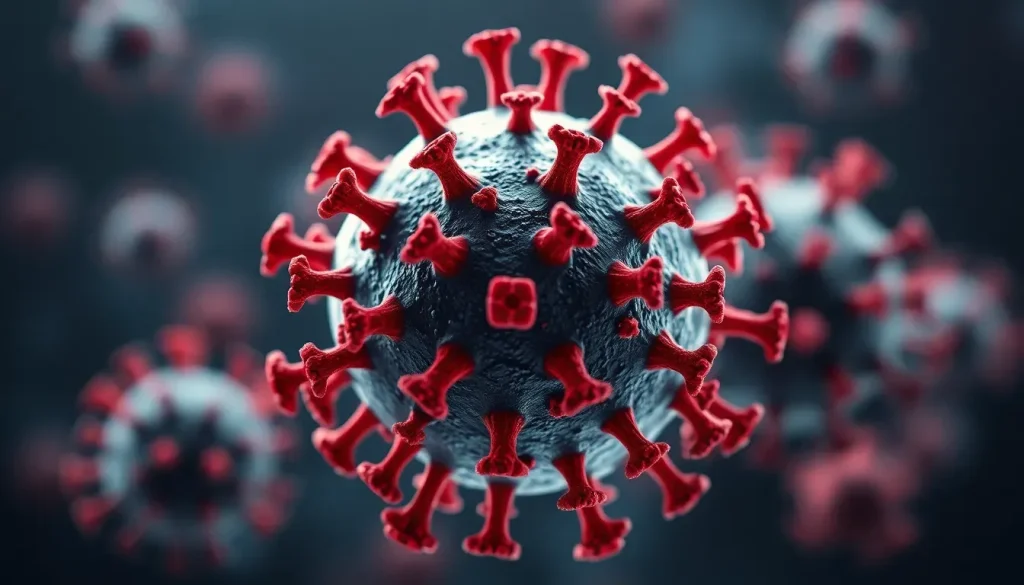AI Develops First Virus Against Living Organisms, Crossing a Line

As we stand on the brink of a new era in biotechnology, the intersection of artificial intelligence (AI) and virology presents fascinating possibilities. The recent research from Stanford University showcases how AI has transcended traditional boundaries by designing a virus capable of targeting living organisms. This groundbreaking study raises questions about the future of medicine and our ability to combat bacterial resistance. Let’s delve deeper into this intriguing development.
The AI Revolution in Genetic Engineering
Artificial Intelligence has revolutionized numerous fields, from language processing to image recognition. Now, it's making waves in genetic engineering. Researchers at Stanford University posed a compelling question: if AI can generate coherent language, why can't it construct a genome using the four letters that make up DNA sequences?
This question led to a remarkable study that, although pending peer review, has already produced significant findings. The researchers successfully generated viral genomes to create bacteriophages, viruses specifically designed to target and eliminate bacterial populations. This technique could become crucial in addressing a pressing global health issue: antibiotic resistance.
The Growing Threat of Antibiotic Resistance
Antibiotic resistance is a looming crisis in modern medicine, with increasingly common bacterial strains developing the ability to evade treatment. The consequences are dire, as these resistant bacteria not only complicate existing infections but also threaten surgical procedures and other medical interventions. Some of the critical factors contributing to antibiotic resistance include:
- Overuse of antibiotics in humans and agriculture.
- Inadequate infection control in healthcare settings.
- Lack of new antibiotics being developed.
- Misuse of antibiotics for viral infections.
In this context, bacteriophages present a promising alternative. These viruses can specifically infect and kill bacteria, offering a targeted solution that could circumvent the problems posed by antibiotic resistance.
Creating Bacteriophages with AI
Traditionally, isolating and cultivating bacteriophages is a labor-intensive process, as viruses can only replicate within living cells. This poses a unique challenge, as researchers must cultivate bacteria to produce the bacteriophages. However, the Stanford scientists have taken a novel approach by leveraging an AI algorithm called Evo2.
Evo2 was trained on vast datasets of genetic sequences from existing bacteriophages. By learning how to combine the four nucleotide bases—adenine (A), guanine (G), cytosine (C), and thymine (T)—the AI was able to generate new viral genomes. The researchers then filtered these sequences to identify those corresponding to viable bacteriophages.
Once they had selected the appropriate sequences, the next step involved synthesizing them in the laboratory. Here’s a simplified breakdown of the process:
- Train the AI on existing bacteriophage genomes.
- Generate new genomic sequences.
- Filter sequences to ensure they correspond to actual bacteriophages.
- Synthesize the nucleotides in the lab.
- Transform these sequences into plasmids for easier introduction into bacteria.
How Bacteriophages Work
The synthesized bacteriophages act like a Trojan horse. When introduced into bacterial cells, they integrate their genetic material into the host’s DNA, effectively hijacking the bacterial machinery to replicate themselves. This ultimately leads to the destruction of the bacterial cell. The implications for this technology are vast, especially in fighting infections caused by bacteria like Escherichia coli, which was one of the test subjects in the study.
Initial results from the experiments were promising, as the newly created bacteriophages successfully eliminated the targeted bacterial populations. This opens up exciting avenues for the development of phage therapy, which could potentially be used in conjunction with or as an alternative to traditional antibiotics.
Future Implications and Ethical Considerations
While the potential of AI-generated bacteriophages is significant, the research is still in its infancy and requires thorough validation. The study has been submitted for peer review, a crucial step in ensuring that the methodology and findings hold up to scientific scrutiny. It is essential to approach these advancements with caution, as the implications of creating new viruses could be far-reaching.
Several ethical considerations arise from this research, including:
- Potential misuse for bioweapons.
- Environmental impacts of releasing engineered viruses.
- Regulation of AI technologies in biomedicine.
As we explore the possibilities that AI brings to the field of virology, it is crucial to maintain a balance between innovation and ethical responsibility. Engaging in open discussions among scientists, ethicists, and policymakers will be vital to navigate this complex landscape.
Looking Ahead: What Comes Next?
The advancement of AI in creating bacteriophages represents a thrilling frontier in the battle against antibiotic-resistant bacteria. If validated through peer review, this research could mark the beginning of a new era in medical treatment. It is essential for the scientific community to continue exploring the capabilities of AI while remaining vigilant about the associated risks.
As we await further developments, it is worth exploring related content that delves deeper into the intersection of AI and viral research. For instance, the video titled "El primer virus de la IA" illustrates the fascinating journey of AI in virology and its potential future applications.
In conclusion, the journey of AI in creating a virus capable of targeting living organisms is just beginning. As researchers continue to push the boundaries of what is possible, the implications for public health and medicine could be profound. Navigating this terrain with caution and ethical awareness will be key to harnessing the full potential of these innovations.




Leave a Reply